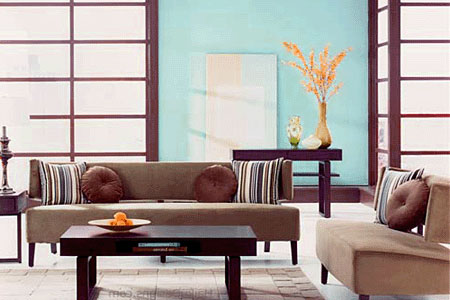
Staging a meditation space in a residential real estate listing can help increase the value of any area that would otherwise be considered undefined and useless. Many homes feature spaces that really do not serve any particular function, such as a nook or alcove. Utilizing these areas to provide room for quiet introspection is a perfect reason to create a meditation space in virtually any house or apartment.
While meditation rooms can be lovely and attractive, they are still poorly ranked on general buyer want-lists. Therefore, they should never replace other more desirable room set-ups, such as extra bedrooms, home offices or walk-in closets. However, when a property already has everything else covered, staging a meditation area might be a great idea, depending on the type of buyer being courted.
This commentary details the process of creating a beautiful meditation space within your house or apartment during the real estate marketing process.
Locating and Staging a Meditation Space
As previously mentioned, it is not wise to utilize an entire room to create a meditation area, especially if the room can better serve a more universally-appealing role, such as a guest room or a nursery. Even the smallest of rooms can usually be successfully transformed into a functional home office, which will please more buyers more than any meditation area ever could.
The best way to integrate a meditation area is within a larger room, in a tucked-away nook that would otherwise seem awkward and undefined. Odd-shaped rooms often make terrific opportunities to place a meditation space, particularly when they have long narrow areas or alcoves. Meditation areas can also be successfully placed under stairways and in small architectural details that might be made into lofts within larger rooms.
I rarely suggest going out of your way to create a meditation area, but instead recommend that if you do have an awkward area of your home, consider a dedicated meditation space as a possible staging solution.
Tips for Creating a Meditation Space
In order to create a relaxing and beautiful meditation area, you will need to set the tone for quiet introspection and deep thought. The following design advice will please any buyer who views the space:
Continue to utilize proportion in even the smallest of meditation rooms. Do not over decorate with art, accessories or furnishings, even if the space is rather large. Instead, keep the décor minimal and simply increase the size and visual impact of each item if a larger space is available.
Keep the space visually light and reflect a zen feeling with choices of art, color and accessories.
Try to avoid obvious spiritual or religious references that might be exclusionary to some buyers. Instead, use the theme of universal tranquility to please everyone.
Be sure to add some comfy cushions to sit on and a focal point to center the space aesthetically. If possible, locate this area to enjoy a scenic inspirational view, if available.
When buyers come to see the home, playing serene music quietly within this space will add to the vibe that you are trying to create. Alternately, the sounds of nature, such as birds or water, can be just as soothing.
Staging a Meditation Space Summation
I usually recommend leaving meditation spaces for homes that are courting empty-nesters or young urban buyers. Few traditional families have the need or want for a dedicated meditation room, especially when compared to the usefulness of other options, such as additional storage or an extra office space.
I have set-up meditation areas for a few clients, within attics, in odd-shaped master bedrooms and in the smallest of extra bedrooms.
Many young professional buyers are currently single, but are still interested in acquiring a property with room to grow for the future. Staging an overly family-friendly environment might not delight these types of buyers, since they need to see the usefulness of the spaces to them, right now. In these cases, a meditation space might be perfectly suited as a residential addition.




